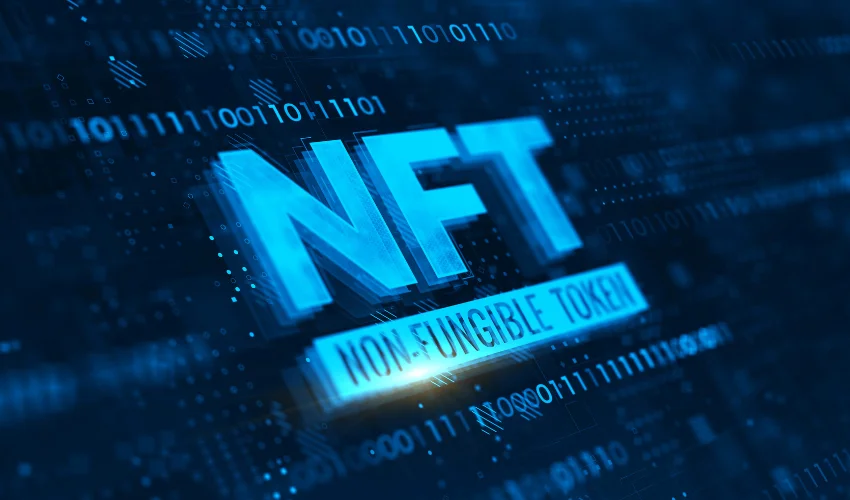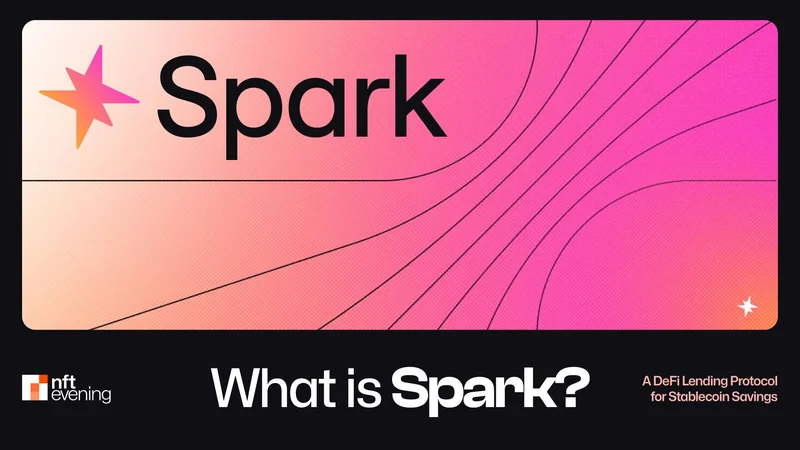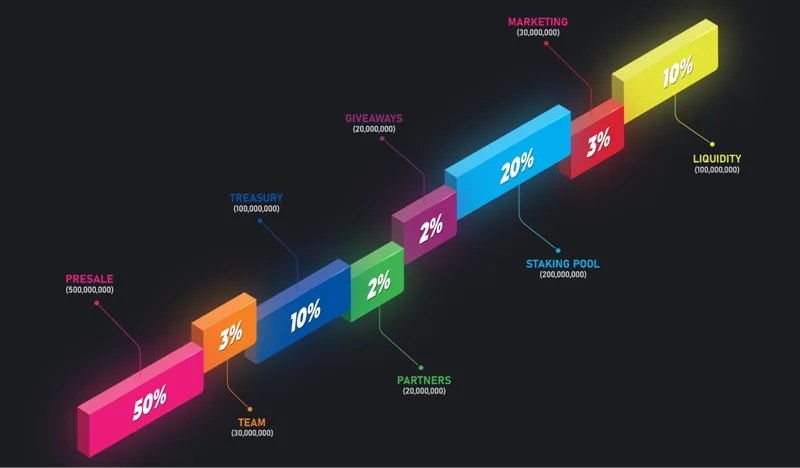The NFT ecosystem is a rapidly evolving field involving unique digital assets (non-fungible tokens) that ensure ownership and transaction transparency through blockchain technology. It comprises creators, markets, platforms, and users, covering various applications such as art, music, gaming, and virtual real estate. The uniqueness and verifiability of NFTs provide direct revenue for creators, but challenges like market volatility and environmental concerns cannot be overlooked. As more people get involved, the future of NFTs is promising, and understanding this ecosystem will help newcomers find opportunities in this emerging market.

What is an NFT?
An NFT (Non-Fungible Token) is a unique digital asset that represents ownership of a specific item. Unlike fungible tokens like Bitcoin or Ethereum, each NFT is distinct. They are typically based on blockchain technology, with the most common standards being Ethereum's ERC-721 and ERC-1155.
Example: Imagine a digital version of a famous painting that exists only once and can be verified on the blockchain. When you purchase the NFT of this painting, you become its sole owner.
Components of the NFT Ecosystem
The NFT ecosystem consists of several key components, including creators, markets, platforms, and users. Each part has its own operational logic, forming a complete ecosystem.
- Creators: Artists, musicians, game developers, etc., create and sell their works through NFTs. Digital artists can mint their creations as NFTs and sell them on the market to earn direct income.
- Markets: NFT markets are platforms for trading NFTs, where users can buy, sell, and auction NFTs. Notable markets include OpenSea, Rarible, and Foundation.
- Platforms: The minting and trading of NFTs typically rely on blockchain platforms such as Ethereum, Binance Smart Chain, and Flow, which provide the infrastructure to support NFTs, ensuring secure and transparent transactions.
- Users: Users are a crucial part of the NFT ecosystem, supporting creators' works by buying and trading NFTs.
How NFTs Work
- Minting: When creators mint an NFT on the blockchain, they use smart contracts. This process converts a specific digital asset (like an image, music, or video) into an NFT and generates a unique identifier on the blockchain.
- Recording and Verification: Each NFT's ownership and transaction history are recorded on the blockchain, ensuring data transparency and immutability. Anyone can view the NFT's details, including the creator, current owner, and past transaction records, via a blockchain explorer.
- Trading: Users can trade NFTs on NFT markets. Buyers purchase NFTs through these markets, and transaction records are updated on the blockchain to ensure ownership transfer.
- Management and Storage: Users manage and store their NFTs using digital wallets (like MetaMask). These wallets contain the user's public and private keys, ensuring secure control over their digital assets.
Applications of NFTs
NFTs have diverse applications across multiple fields, including art, music, gaming, and virtual real estate.
- Digital Art: Artists can sell their digital works through NFTs. For instance, Beeple's "Everydays: The First 5000 Days" sold for $69.3 million, showcasing the immense potential of digital art.
- Music: Musicians can mint songs or albums as NFTs and sell them directly to fans, helping artists achieve higher earnings while reducing reliance on traditional music distribution platforms.
- Gaming: In blockchain games, players can own and trade in-game items like skins, characters, and virtual currencies. For example, "Axie Infinity" allows players to earn by purchasing and breeding virtual pets.
- Virtual Real Estate: Users can buy land and property in virtual worlds, typically existing as NFTs. Decentraland and The Sandbox are two well-known virtual world platforms.
Differences Between the NFT Ecosystem and Other Blockchain Ecosystems
The NFT ecosystem differs from other blockchain ecosystems (like Bitcoin and Ethereum's financial ecosystem) in its emphasis on uniqueness and application scenarios. While other blockchains often focus on financial transactions and value transfer, the NFT ecosystem highlights asset uniqueness and ownership, establishing digital content as distinct assets on the blockchain.
Reliability of the NFT Ecosystem
The reliability of NFTs relies on the security and transparency of blockchain technology. Each NFT's ownership and transaction history are recorded on the blockchain, ensuring data immutability. Moreover, reputable NFT markets and platforms often implement strict verification processes to ensure that the NFTs being sold are legitimate and original.
Future Outlook
The future of the NFT ecosystem is full of potential. As more creators and brands enter the space, the application scenarios for NFTs will continue to expand. From digital art to virtual real estate, more innovative uses are likely to emerge. Additionally, as technology advances, the costs of minting and trading NFTs are expected to decrease, attracting more users.
Scale of Participants
Although it's challenging to provide an exact number of participants, the number of players in the NFT ecosystem has reached millions. Market data indicates that NFT trading volumes surged in 2021 and 2022, with many well-known artists, musicians, and brands participating. The user base includes art enthusiasts, investors, and casual consumers, reflecting its broad appeal.
Difficulty for Newcomers
For newcomers, entering the NFT ecosystem is moderately challenging but requires some learning and preparation. First, you need to understand how to set up a digital wallet (like MetaMask) to store and manage NFTs. Next, familiarize yourself with different NFT markets and platforms, as well as the processes for minting and trading NFTs. Finally, stay informed about market trends and community updates to make better decisions.
Advantages and Challenges of NFTs
Advantages:
- Uniqueness and Scarcity: NFTs ensure the uniqueness of each asset, increasing its value.
- Verifiability: Through blockchain technology, the ownership and transaction history of NFTs can be publicly verified, reducing fraud risk.
- Direct Revenue: Creators can transact directly with users, minimizing intermediary costs.
Challenges:
- Market Volatility: The NFT market is still developing, with significant price fluctuations and high investment risks.
- Environmental Concerns: Some blockchains have high energy consumption, raising environmental concerns.
- Legal and Copyright Issues: The legal status and copyright issues surrounding NFTs are not fully clarified, potentially leading to disputes.
Conclusion
The NFT ecosystem is a promising field encompassing various aspects such as art, music, and gaming. Despite facing challenges, through learning and participation, you can find your niche in this emerging market. I hope this article helps you better understand the NFT ecosystem and sparks your interest!
Related Articles

What is SparkLend? A Beginner-to-Advanced Guide to Decentralized Lending Made Easy
SparkLend is a decentralized, non-custodial liquidity market protocol built on the Ethereum blockchain. Simply put, it functions like a bank without intermediaries, allowing users to borrow and lend d
June 26, 2025
What is sUSDS? How Do I Acquire sUSDS?
This guide will walk you through Sky Savings’ sUSDS and sUSDC—your gateway to earning yield with stablecoins while keeping your funds secure.Sky Savings: Your Journey to Stablecoin Yields Begins HereW
June 26, 2025
What is SparkLend? A Complete Guide from Beginner to Pro
SparkLend is a decentralized, non-custodial liquidity market protocol that allows users to participate as lenders or borrowers. Lenders provide liquidity to earn passive income, while borrowers can ta
June 24, 2025
What Exactly Does Spark Protocol Do? A Complete Guide
This guide will walk you through Spark Protocol — an innovative platform designed to tackle the long-standing issue of fragmented liquidity in the DeFi space. You'll learn how to earn yield, borrow as
June 24, 2025
RXS Token Trading Guide: From Presale to Uniswap – A Complete Walkthrough
This guide will walk you through the trading process of the RXS Token, from the restrictions during the presale phase to free trading on Uniswap, helping you trade securely and efficiently.1. Introduc
June 24, 2025
